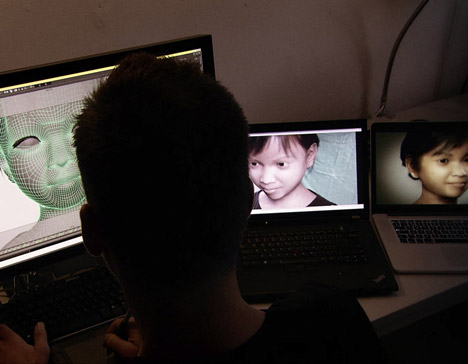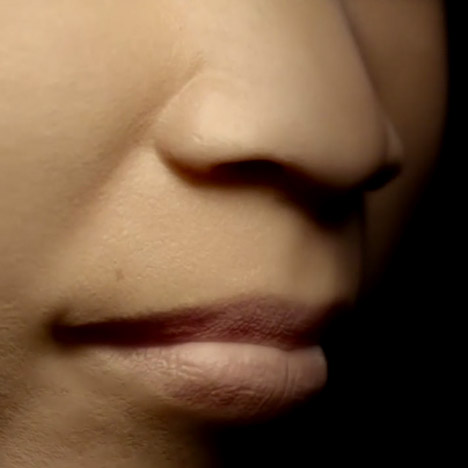Lemz wins Dutch Design Award 2014 with avatar for fighting child sex tourism online
News: Amsterdam agency Lemz has taken away the top honour at this year's Dutch Design Awards for Sweetie: a virtual 10-year-old girl created to catch perpetrators of webcam child sex tourism (+ movie).
Lemz topped the Service and Systems category then beat five other category winners to be announced as the overall winner of the Dutch Design Awards, during a ceremony in Eindhoven last night.
"Sweetie is not only a convincing example of what design can do for us, but it also questions the role of design," said the jury, chaired by head of Dutch science research company DSM, Atzo Nicolai.
Lemz began the project to help international children's aid organisation Terre des Hommes raise awareness of webcam child sex tourism (WCST) and catch the offenders.

"Men from rich countries pay children in poor countries to perform sexual acts in front of webcams," said Lemz. "Police don't enforce the national and international laws prohibiting WCST because they wait for victims to report the crime before investigating. But child victims of WCST do not report this abuse."
Lemz designed Sweetie as a 3D computer model that looks like a 10-year-old girl from the Philippines, a country they identified as having many children at risk from exploitation.
They replicated the facial features and actions of a real child to create the digital avatar.

Taking on an investigative role, members of the team entered online chat rooms posing as Sweetie to identify and track down those asking children for explicit visual material.
They controlled the realistic avatar's movements and facial expressions while trying to find out as much about who was on the other side of the conversation as possible.
Over 10 weeks from May 2013, they located 1,000 individuals from 71 countries, and handed their identities and the evidence to Interpol. Arrests were made and victims were rescued, resulting in global media coverage for the project.
The Lemz team was hesitant to reveal they were the ones behind the project, but decided to go public after the UN encouraged them to share what they had learnt.
"We believe that businesses, and creative agencies in particular, should use their talents and resources to make this world a better place," said Lemz co-founder Mark Woerde in a statement issued earlier this year.

"The Sweetie campaign proves that creative agencies can have significant impacts on global problems that may seem to have no relevance to our industry or to our daily lives."
The project received the top accolade and the Future Award at the Dutch Design Awards, which are handed out to the best design projects in the Netherlands to coincide with Dutch Design Week.
Winners of the other categories included Viktor & Rolf's Fall 2013 Haute Couture collection in Fashion, the Rotterdam Centraal station redevelopment by Benthem Crouwel, MVSA Architects and West 8 in Habitat, the In Vitro Cookbook with recipes for synthetic meat by Next Nature Network in Design Research, Kummer & Herrman's Sochi Project in Communication and the Rescue Tip Board by Spark Design & Innovation in Product.

Dave Hakkens, creator of the Phonebloks modular phone concept and the Precious Plastic recycling machine, scooped the Young Designer prize, while urban park Natura Artis Magistra was named Best Client.
All the shortlisted projects are on display at an exhibition in the Strijp area of Eindhoven during Dutch Design Week, which continues across the city until 26 October – follow Dezeen's coverage of the event.